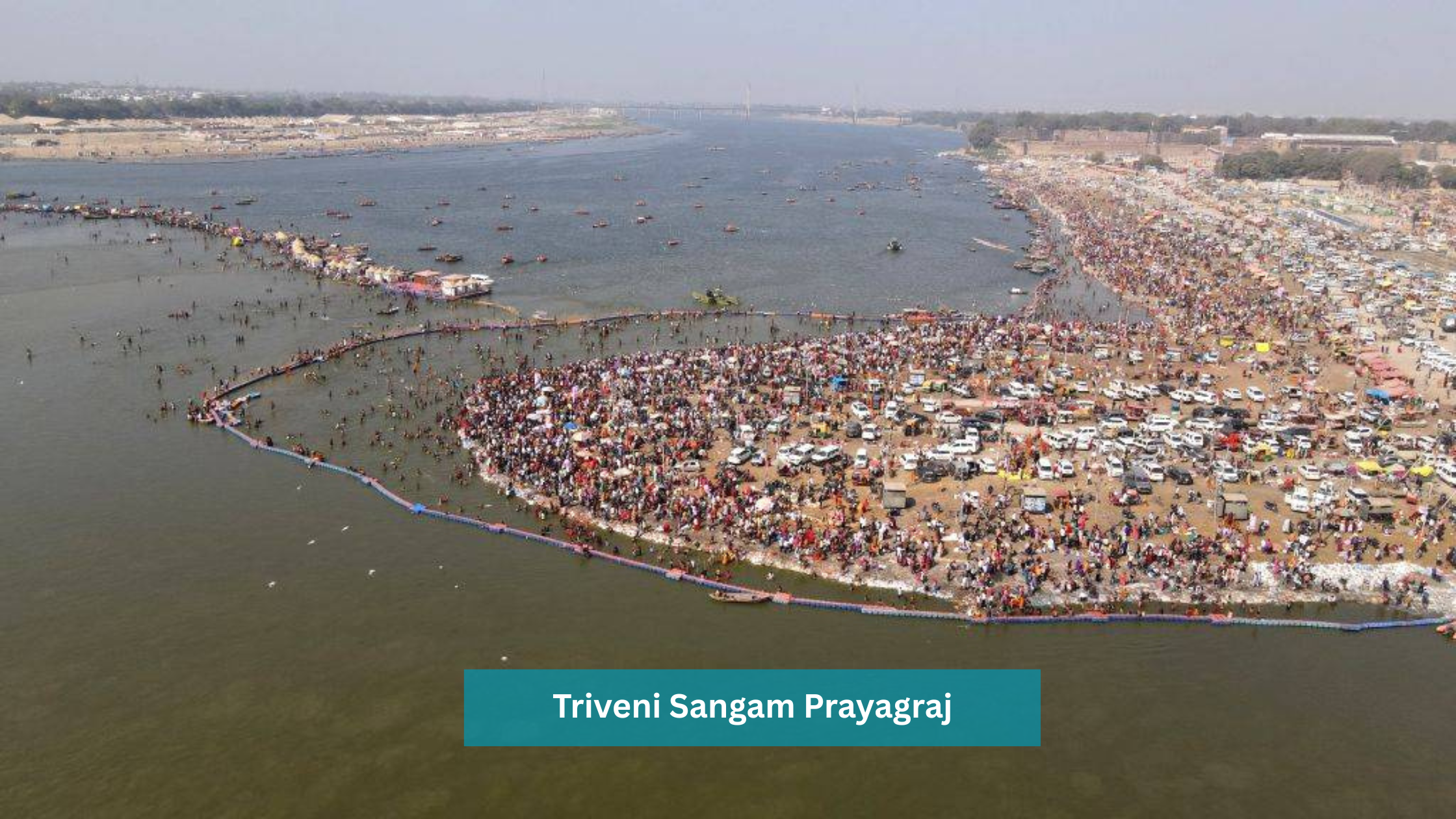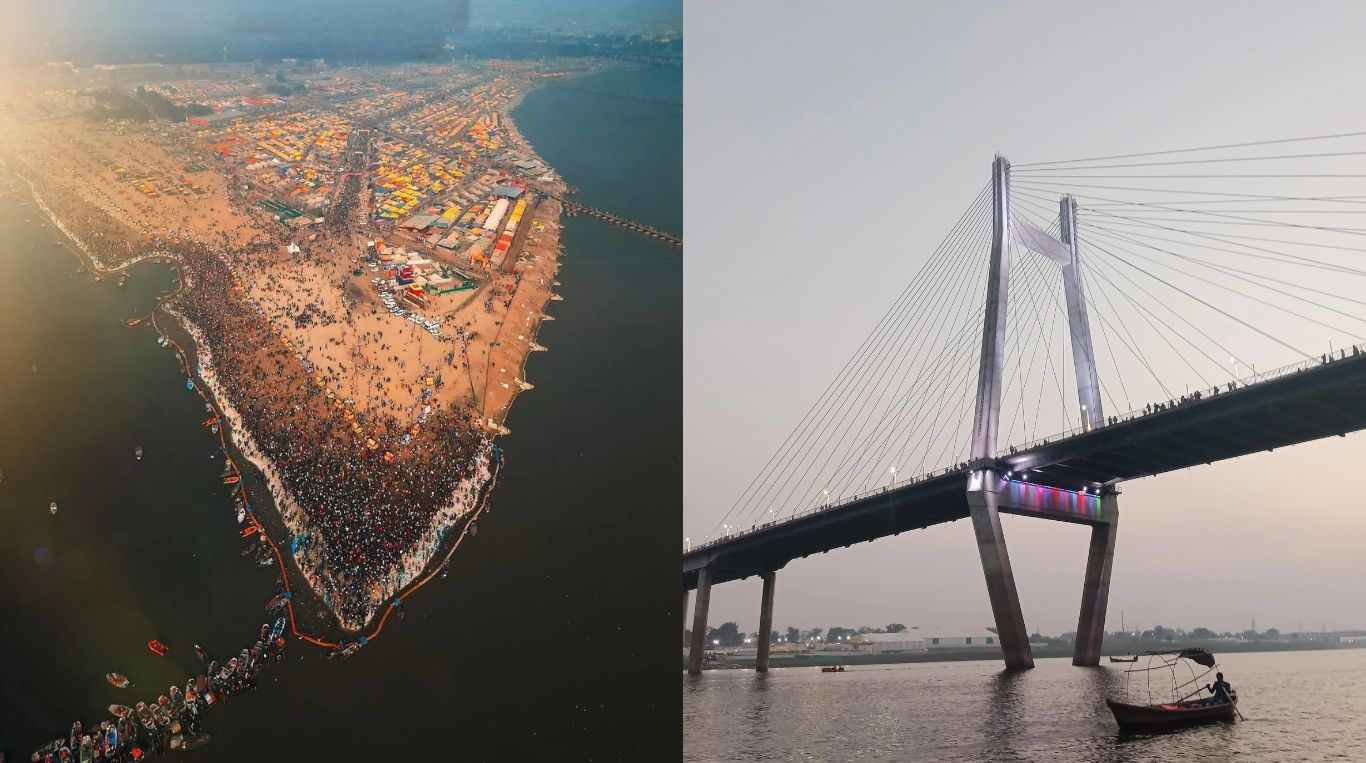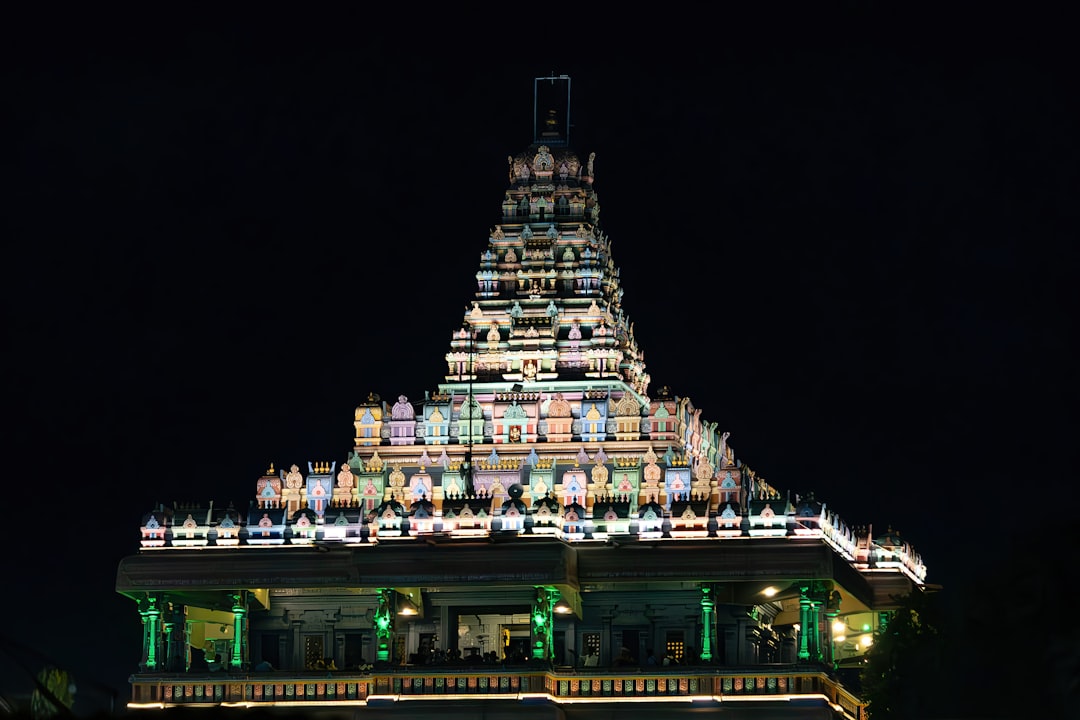Prayagraj, formerly known as Allahabad, is a city steeped in history and spirituality. It’s a place where ancient traditions meet modern life, and where every monument whispers tales of emperors, saints, and freedom fighters. Beyond their impressive architecture and religious significance, many of these landmarks hold fascinating untold stories. Let’s explore some of the most famous monuments in Prayagraj and uncover the secrets they hold.
Triveni Sangam: Where Rivers Meet and Legends Begin
The Triveni Sangam is arguably the most famous spot in Prayagraj. It’s the confluence of three of India’s holiest rivers: the Ganga, the Yamuna, and the mythical Saraswati. While the Ganga and Yamuna are visible, the Saraswati is believed to flow underground, adding to the mystique of this sacred place.
The Untold Story: Did you know that the Kumbh Mela, the world’s largest peaceful gathering, takes place here every 12 years? Millions of pilgrims come to bathe in the holy waters and cleanse their sins. But the Sangam’s importance goes back even further. Ancient texts mention it as a place of learning and spiritual enlightenment for centuries, predating even many of the empires that rose and fell along its banks. Legend says that drops of nectar fell here during a fight between gods and demons, making the water eternally sacred.
Allahabad Fort: A Mughal Marvel with a Hidden Temple
Built by Emperor Akbar in 1583, Allahabad Fort is a magnificent example of Mughal architecture. Its imposing walls and strategic location at the Sangam made it a crucial military stronghold. Today, it’s mostly controlled by the Indian Army, but parts are open to the public.
The Untold Story: Inside the fort lies the Patalpuri Temple, an ancient underground temple that predates the fort itself. Legend says that Lord Rama visited this temple during his exile. The temple houses the Akshaya Vat, an immortal banyan tree said to grant wishes. What’s truly remarkable is that Akbar, a Muslim ruler, allowed this Hindu temple to remain intact within his fort, showing a level of religious tolerance not always seen in that era. It’s a testament to the diverse cultural fabric of Prayagraj.
Khusro Bagh: A Mughal Garden of Love and Loss
Khusro Bagh is a large walled garden that houses the tombs of Khusro, Jahangir’s eldest son; Shah Begum, Khusro’s sister and Jahangir’s first wife; and Sultan Nithar Begum, Khusro’s daughter. The gardens offer a peaceful respite from the city’s hustle and bustle, and the intricate Mughal architecture is truly stunning.
The Untold Story: Khusro’s story is a tragic one. He rebelled against his father, Jahangir, and was eventually captured and blinded. Shah Begum, heartbroken by the conflict between her husband and son, committed suicide. Khusro Bagh is not just a beautiful garden; it’s a poignant reminder of the complex family dynamics and political intrigues of the Mughal court. The intricate carvings on the tombs often depict not just royal symbols, but also scenes of everyday life, offering a glimpse into the Mughal era.
Anand Bhavan: A Home Turned into a Symbol of Freedom
Anand Bhavan was the Nehru family’s residence in Prayagraj. It served as a center for the Indian National Congress during the freedom struggle. Today, it’s a museum showcasing the life and times of the Nehru-Gandhi family, one of India’s most influential political dynasties.
The Untold Story: Before Anand Bhavan, there was Swaraj Bhavan, the original family home. The Nehrus donated Swaraj Bhavan to the Indian National Congress to be used as their headquarters. Anand Bhavan was then built next door. What’s fascinating is the level of personal sacrifice the Nehru family made for the country’s independence. They gave up a life of privilege and comfort to dedicate themselves to the freedom struggle, and Anand Bhavan became a symbol of their commitment.
All Saints Cathedral: A Gothic Masterpiece
All Saints Cathedral, also known as Patthar Girja, is a stunning example of Gothic Revival architecture. Built by the British in the late 19th century, it’s one of the finest cathedrals in India, with its intricate stained-glass windows and impressive spire.
The Untold Story: The cathedral was built to commemorate the British soldiers and civilians who died during the Indian Mutiny of 1857. However, its construction also reflects the grandeur and power of the British Empire at the time. The elaborate design and imposing structure were intended to impress upon the local population the strength and sophistication of British rule. Examining the cathedral’s architecture and the stories behind its creation provides a unique perspective on the colonial history of Prayagraj.
Frequently Asked Questions
What is the best time to visit Prayagraj?
The best time to visit Prayagraj is during the winter months (October to March) when the weather is pleasant and ideal for sightseeing.
Are there any dress code restrictions for visiting religious sites?
It’s advisable to dress modestly when visiting religious sites like the Triveni Sangam and temples. Avoid wearing revealing clothing.
How can I reach the Triveni Sangam?
You can reach the Triveni Sangam by auto-rickshaw, taxi, or bus from anywhere in Prayagraj.
Is photography allowed inside Allahabad Fort?
Photography is restricted in certain areas of Allahabad Fort due to security reasons. Follow the instructions of the security personnel.
Are there accommodation options near Anand Bhavan?
Yes, there are many hotels and guesthouses available near Anand Bhavan to suit various budgets.
Prayagraj’s monuments are more than just bricks and mortar; they are living embodiments of history, culture, and spirituality. By understanding their untold stories, we can gain a deeper appreciation for this ancient city and its enduring legacy. So, next time you visit Prayagraj, take the time to look beyond the surface and discover the secrets hidden within these remarkable landmarks.



